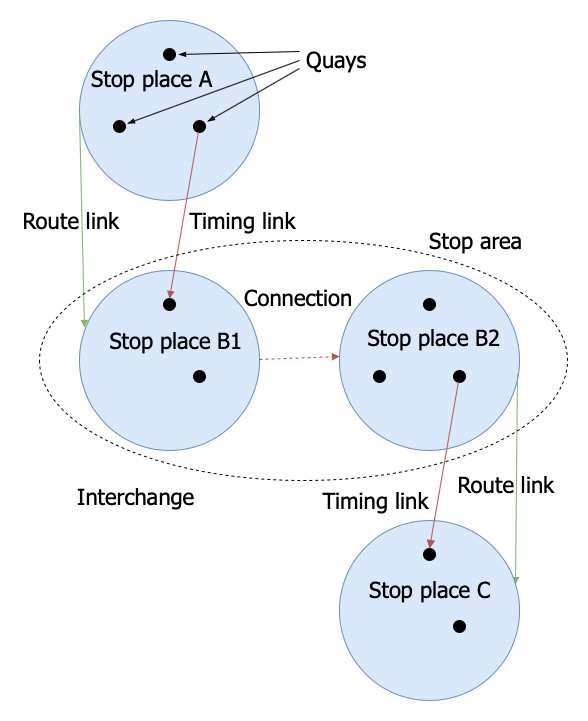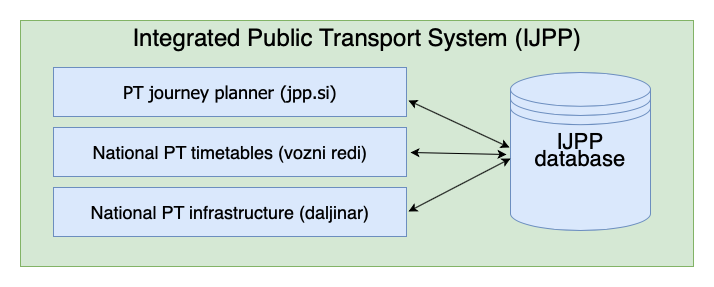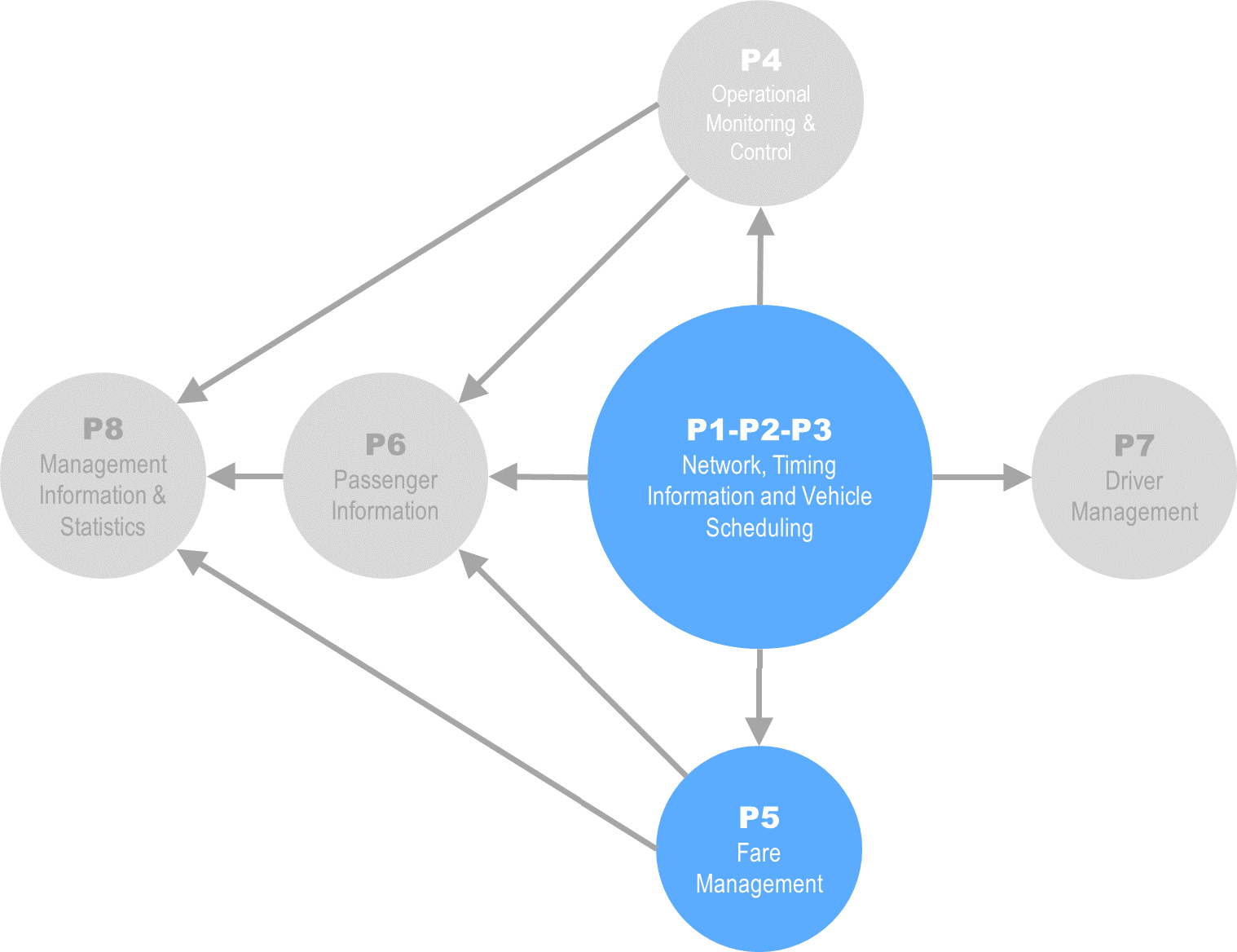- Two early software systems AVRIS (2000) and SIJPRIS (2009) have implemented a nationwide IT database schema that corresponded to the early version of Transmodel conceptual model. Technically, the AVRIS system was a desktop application and SIJPRIS was a distributed information system developed by the Slovenian Roads Agency (public transport authority in Slovenia, part of Ministry of Transport at that time) primarily for the management of the public inter-urban (long distance) bus transport. The system supported public transport authority tasks (management and registration of public transport infrastructure including stop place model and scheduled services model) and concessioners’ tasks (timetables proposals, periodical reporting about financial figures, number of passengers transported) stipulated by the law. Data exchange within SIJPRIS was implemented through a web service, using XML documents formatted according to own XML schema called TransportXML.org.
- Since 2017 a national integrated public passenger transportation system (IJPP, http://ijpp.si ) is in operation. It integrates all public transportation operators in Slovenia, including the national railways, to provide a unified ticketing & fare collection system. With 37 bus and one national railway operator, the IJPP deploys more than 1500 automated fare collection and validation terminals. By using unified ticketing users can travel across the country, regardless of the transportation provider. Ticket validations are performed with contactless cards.
The backoffice system consist of the three modules:- public transport infrastructure (infrastructure points and links, stop places, zones, interchanges etc.)
- timetables (timing information and a tool for creation of timetables)
- management analytics and reporting (set of tools, which enable different public transport data views (i.e. temporal data, financial figures, number of passengers transported, number of kilometers driven (per PTO, per vehicle etc.), number of fares sold, etc.) taking into account linked passenger validations on terminals).
The IJPP system was built on the experiences from the previous AVRIS and SIJPRIS systems. It adopted the Transmodel-like conceptual database model (see Figure 1). However, the model does not yet consistently separate infrastructure, timing and service pattern layers as suggested in Transmodel.
Components of the IJPP system (Figure 2) are: IJPP database and the three PT systems (PT journey planner, national PT timetables, national PT infrastructure (daljinar).
- Based on the IJPP, a national journey planner was developed, which integrates all public transport in Slovenia (urban, inter-urban and rural travel, long distance travel): http://www.jpp.si

Figure 1: Transmodel-like conceptual data model of the IJPP

Figure 2: IT architecture of the IJPP system

Target users
Different IJPP IT systems for target different users:
- PT journey planner is aimed for all passengers.
- Smartcard ticketing initially started with student population in 2017 and is planned to extend for all passengers.
- The national PT timetables system is mandatory used by all PT operators for timetable design and timetable submission to the PT authority. PT authority manages timetables (registration, modification, rejection).
- National PT infrastructure system manages physical stop points within PT network.
Implementation scope
All systems comprising IJPP are nation-wide system.
Functionalities
Functionalities of the IJPP system enable:
- Management of the national infrastructure (registration of stop places its location, status and inventory (i.e. information display)
- Management of timetables for urban (city), inter-urban () and rural areas for city buses, coaches and rail
- Passengers can plan a PT journey planner using http://jpp.si
- The IJPP system uses a card centric approach where the media is a prepaid smart card
Usage
System has been in use since 2017 and will be integrated with National Access Point (NAP, compliant with Transmodel and NeTEx) in 2019.
